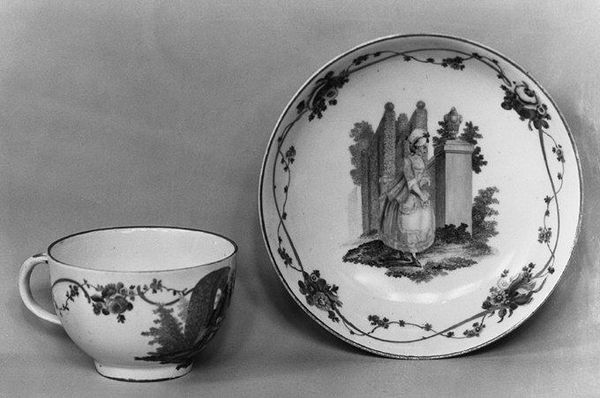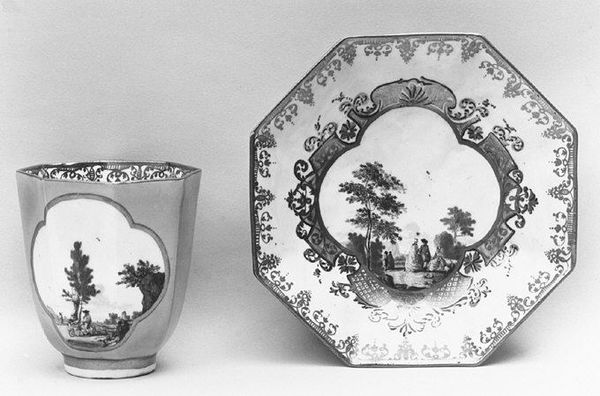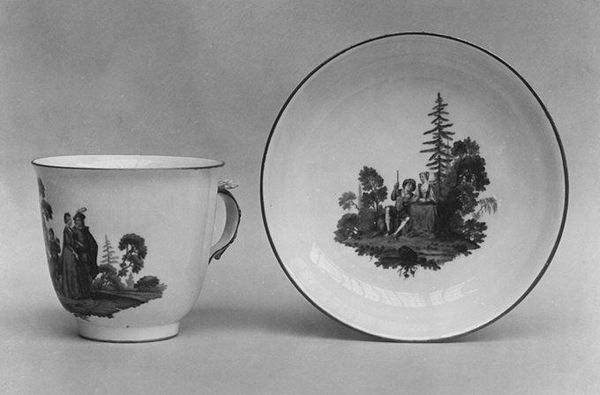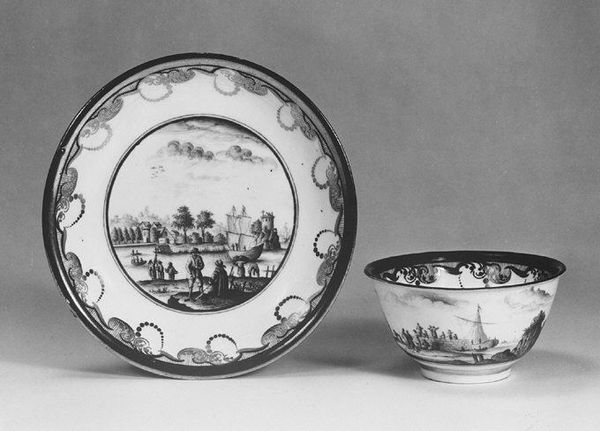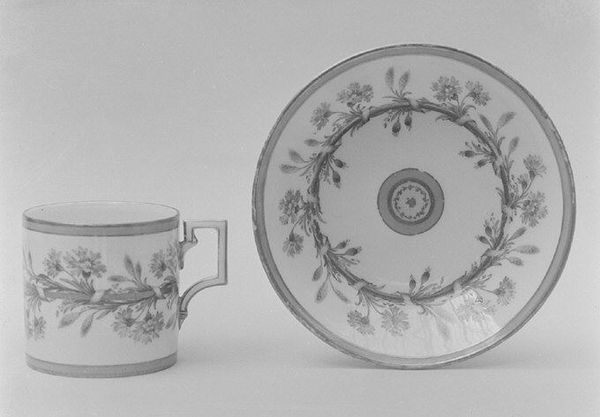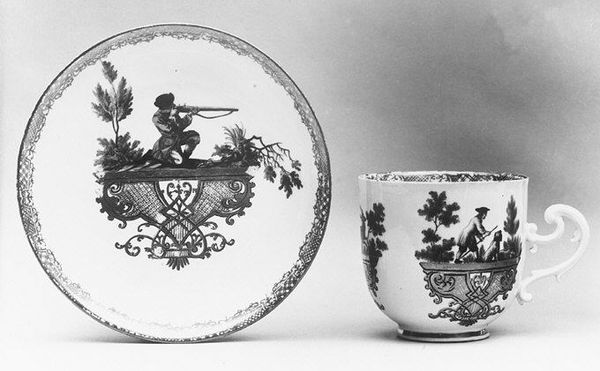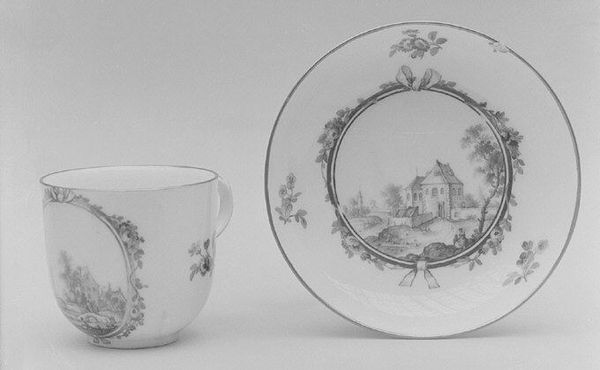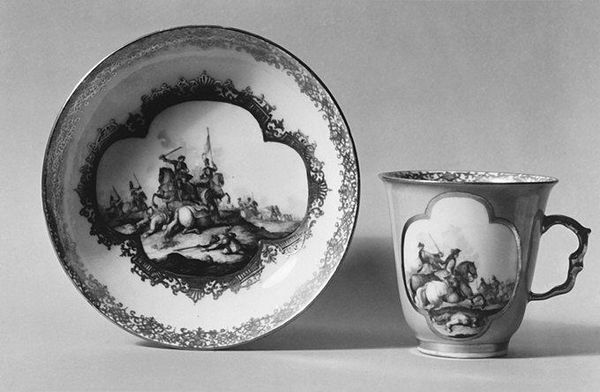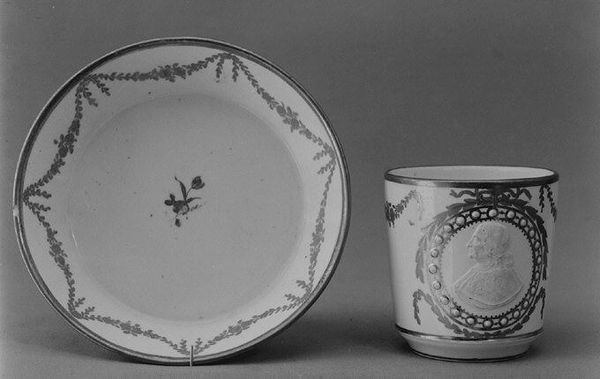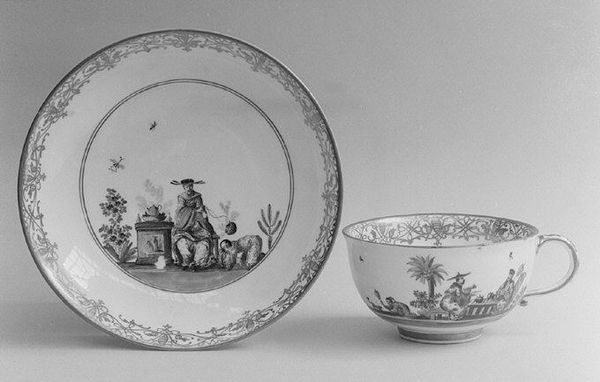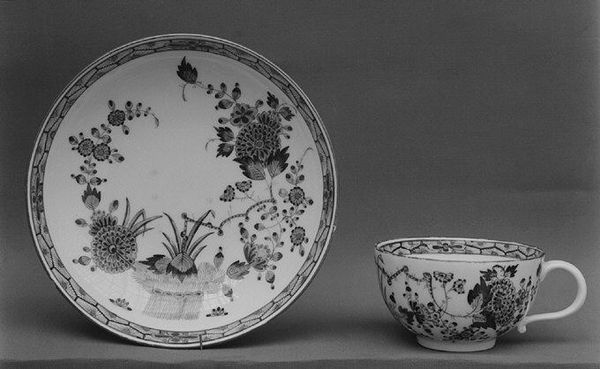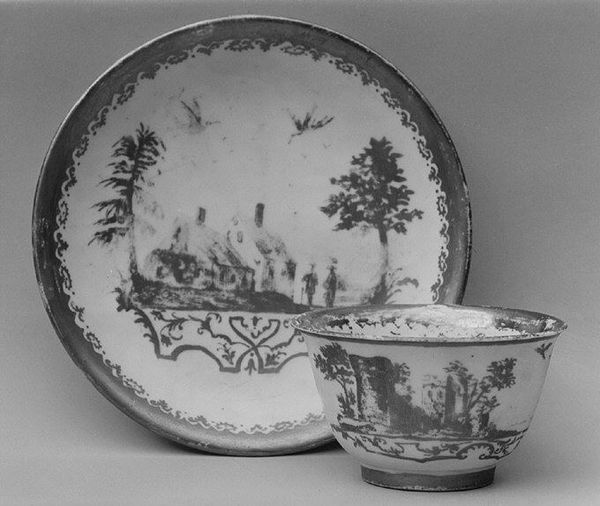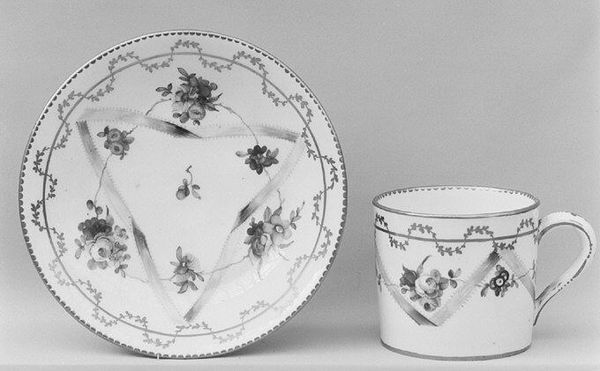
ceramic, porcelain
#
neoclacissism
#
ceramic
#
porcelain
#
geometric
#
black and white
#
decorative-art
Dimensions: Height (cup .288): 2 3/4 in. (7 cm); Diameter (saucer .289): 5 in. (12.7 cm)
Copyright: Public Domain
Editor: This ceramic cup and saucer was crafted around 1780 to 1790 by the Fulda Pottery and Porcelain Manufactory. It’s fascinating to see these Neoclassical, decorative-art designs. I’m really struck by the monochrome palette. How does the historical context influence our perception of these everyday objects? Curator: That’s a key question! This cup and saucer are more than just tableware; they’re artifacts reflecting the societal values of the late 18th century. The black-and-white design, the idealized urns depicted—they’re deliberate choices signaling a connection to classical antiquity, which was seen as a source of legitimacy and refined taste for the elite. Consider who would have commissioned and used such pieces. Editor: Right, the elite using it to reinforce their position. What role did decorative arts play in communicating social status and political ideologies during this period? Curator: Porcelain, like this piece, was a luxury item, a symbol of wealth and power. The imagery, too, plays a role. Neoclassical motifs weren't just aesthetic choices; they alluded to republican virtues, order, and reason – ideas very much in vogue, and in some cases, revolutionary. The placement of the cup and saucer within a display setting further amplifies its social context, doesn’t it? Editor: Absolutely. I never considered how loaded a simple cup and saucer could be! It reflects how museums influence how we consider it in hindsight too. Curator: Precisely! Recognizing art's relationship with power helps us look critically at the museum itself and other institutions responsible for shaping narratives around art. It asks us to consider whose stories are being told and whose are being left out. Editor: I’ll definitely look at decorative art differently now! It’s exciting to consider the multiple layers of history embedded in even a humble teacup. Curator: Indeed, this analysis changes our appreciation of this craft piece, adding significance to such commonplace relics of social dynamics and aesthetic inclinations.
Comments
No comments
Be the first to comment and join the conversation on the ultimate creative platform.
